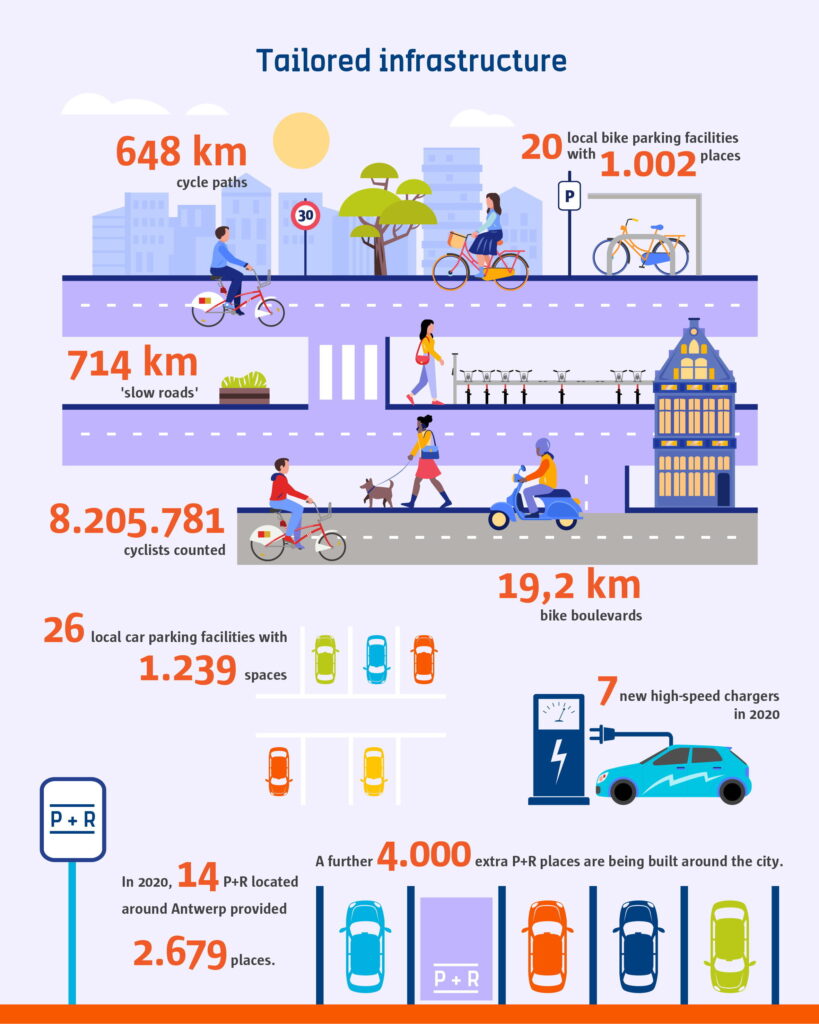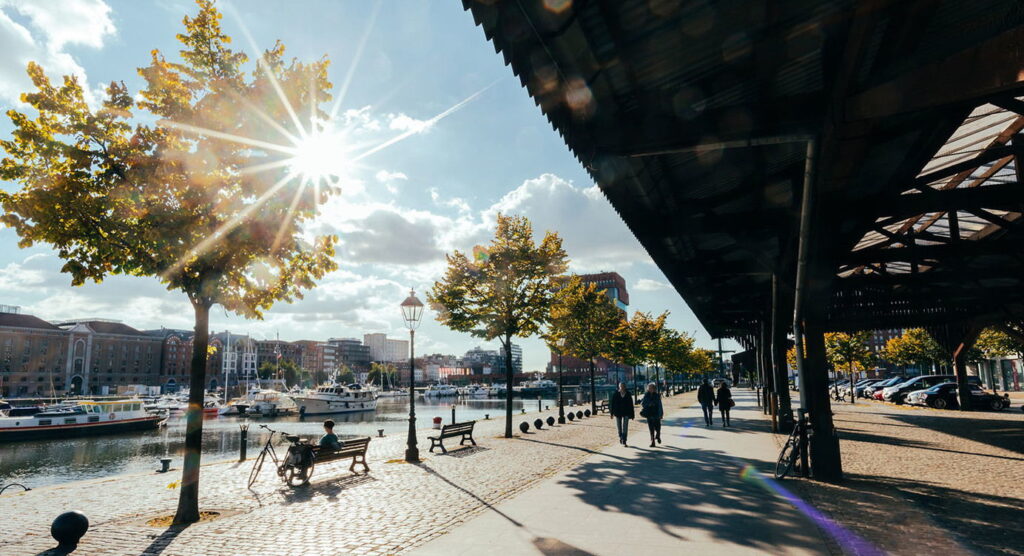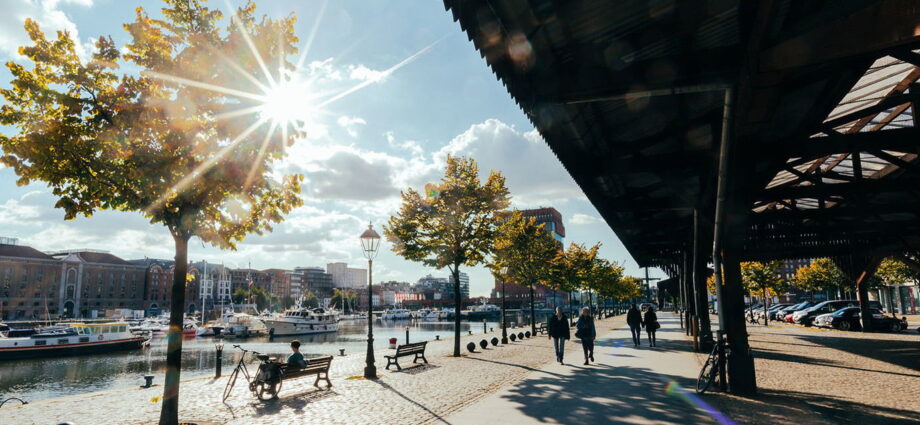We recently enjoyed watching this video featuring Marijke de Roeck on ‘Enhancing Liveablity in the City’ produced by urbanNext and were eager to connect and learn more about the Smart Ways to Antwerp program, for which she has been the Program Manager for since the program’s inception in 2015.
Smart Ways to Antwerp is ‘a program that helps people to get out of their cars and change to more sustainable modes of transport in order to reduce congestion in the city and around the city but also to enhance livability in the city.’
When and why was the Smart Ways to Antwerp program established?
Marijke de Roeck: The program was set up because the city and the port were facing the start of a number of major roadworks that would heavily hinder the accessibility of both the city and the port. In order to keep the city accessible between 50,000 and 100,000 car drivers had to change their daily commute and shift to PT and walking, cycling or a combination of collective and active modes.
Is Smart Ways to Antwerp a municipal program?
Marijke de Roeck: Yes, the program is run by the City of Antwerp, but with the support of the European Commission and of the Flemish Government, and in strong collaboration with a number of Flemish agencies and public transport operators (De Lijn and NMBS).
“What’s important to share, is that every successful program is multidisciplinary: it involves city planners, architects, mobility experts, citizens, companies, transport operators and digital experts. your program really gets wings, when these people team up and are truly passionate about making their city the best place to live and work in.”
Marijke de Roeck
What are the primary modes that the program helps people get out of their cars?
Marijke de Roeck: We focus on a shift towards public transport, shared micro-mobility, cycling and walking and of course towards a smart intermodal combination.
You note in the urbanNext video that “we don’t want cars in residential areas“. How has the public response been to this and how does the program communicate the benefit of reduced motorized traffic in residential areas to any local critics?
Marijke de Roeck: The COVID-period helped us to implement our ‘living streets’ or residential areas at a higher speed: our residents were in desperate need for more outdoor space close to home. In these residential areas priority is given to pedestrians. This means these streets are also safe for children to play or for bar and restaurant keepers to lay out roomy terraces. There was a little bit of criticism in one commercial street, but given the high quality of the new infrastructure this criticism subdued.
There is a robust communication campaign as well as part of Smart Ways to Antwerp. What are your thoughts on the importance of communicating about mobility to citizens as well as the various modes and platforms to do so?
Marijke de Roeck: Communication is key in keeping all the active and collective modes top of mind with our travelers, whether they’re residents, commuters or visitors. Moreover, Smart Ways to Antwerp also celebrates travelers who have made the shift and favors a new and sustainable paradigm for travel and transport.
You note in the UrbanNext video that “If we can help deploy all this across Europe, that would be great.” Your partnership with cities is indeed exciting. What cities are you actively working with and what do you see as the potential for cities across Europe to share what is really working in terms of their programs, tools and campaigns for mobility shifts?
Marijke de Roeck: Currently we’re working together with a large number of cities in various CIVITAS projects: ranging Platanias in Crete, over Alba Iulia in Romania, Klaipeda in Lithuania, to Budapest, Manchester, Rotterdam and Stockholm, to give some examples. What’s important to share, is that every successful program is multidisciplinary: it involves city planners, architects, mobility experts, citizens, companies, transport operators and digital experts. your program really gets wings, when these people team up and are truly passionate about making their city the best place to live and work in.

https://www.slimnaarantwerpen.be/en/about-us/mobility-figures-for-antwerp-belgium-2020
Looking at the mobility figures at your site, it’s exciting to see that shared mobility is on the rise, congestion decreasing each year and that infrastructure dedicated to cyclists and pedestrians (and not permitting any motorized traffic) has been further developed. These are great developments. What are the key mobility challenges ahead?
Marijke de Roeck: There are at least three key challenges: this modal shift needs to be enhanced (1) in the city itself and needs to expand (2) to the entire Antwerp region. We also need to speed up the green shift both in the port and in the city.
It’s great to also hear your reference visitors earlier because it is of course essential to consider the movement of needs of residents but also thoughtful and wise to consider the movement and needs of visitors. What aspects of local mobility do you think visitors to Antwerp appreciate the most?
Marijke de Roeck: We know that 50% of our visitors come by train and are really enthusiastic about their trip and arrival in our monumental Central Station. We also see that our shared wheels are highly appreciated.
“The COVID-period helped us to implement our ‘living streets’ or residential areas at a higher speed: our residents were in desperate need for more outdoor space close to home. In these residential areas priority is given to pedestrians. This means these streets are also safe for children to play or for bar and restaurant keepers to lay out roomy terraces.”
–Marijke de Roeck
A personal question- what are your favorite areas or streets to walk on in Antwerp?
Marijke de Roeck: I’m a big fan of the Antwerp trams… and like most people I enjoy walking in the Wilde Zee (one of our pedestrian areas) or along the Quays of the River Scheldt.


